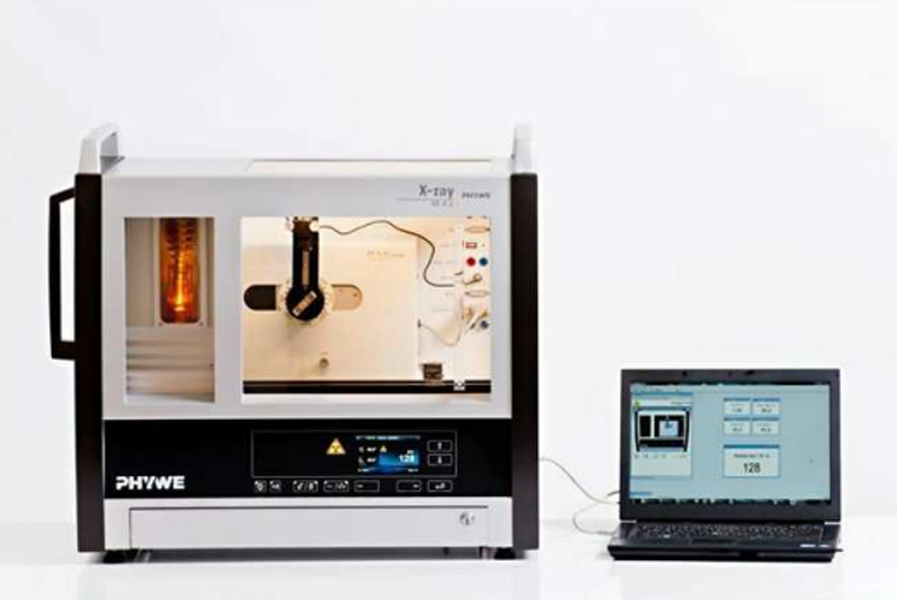Compton scattering of X-rays

Compton scattering is to be achieved by directing an X-ray beam against a piece of plastic. The portions of the scattered X-rays at various angles is to be measured with a counter tube. Measurements are to be made with an absorber positioned in front of and behind the scatterer, so that the Compton wave length can be determined from the varying intensity attenuation of the X-rays at different wavelengths, using a premeasured transmission curve.
Slide mount for optical bench expert, h = 30 mm
Geiger-Mueller counter tube, type B, BNC cable 50 cm
XR 4.0 X-ray LiF crystal, mounted
XR 4.0 X-ray Diaphragm tube d = 2 mm
XR 4.0 X-ray Diaphragm tube d = 5 mm
XR 4.0 X-ray Compton attachment
XR 4.0 X-ray goniometer
XR 4.0 X-ray optical bench
XR 4.0 expert unit, X-ray unit, 35 kV
XR 4.0 Software measure X-ray
Data cable USB, plug type A/B, 1.8 m
Plate holder
XR 4.0 X-ray Plug-in Cu tube
- Determine the transmission of an aluminium absorber as a function of the Bragg angle and plot it as a function of the wavelength of the radiation.
- Measure the intensity of the radiation that is scattered at an angle of a) 60° b) 90° and c) 120° on an acrylic glass block with and without an absorber.
- Determine the Compton wavelength of the electron based on the transmission curve.
- Compton effect
- Compton wavelength
- Rest energy
- Absorption
- Transmission
- Conservation of energy and momentum
- X-rays
- The Bragg equation
